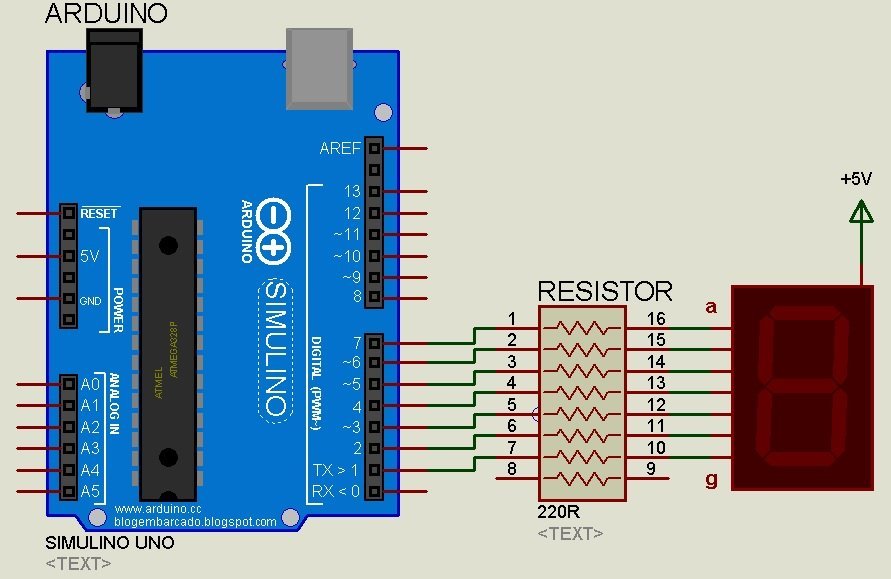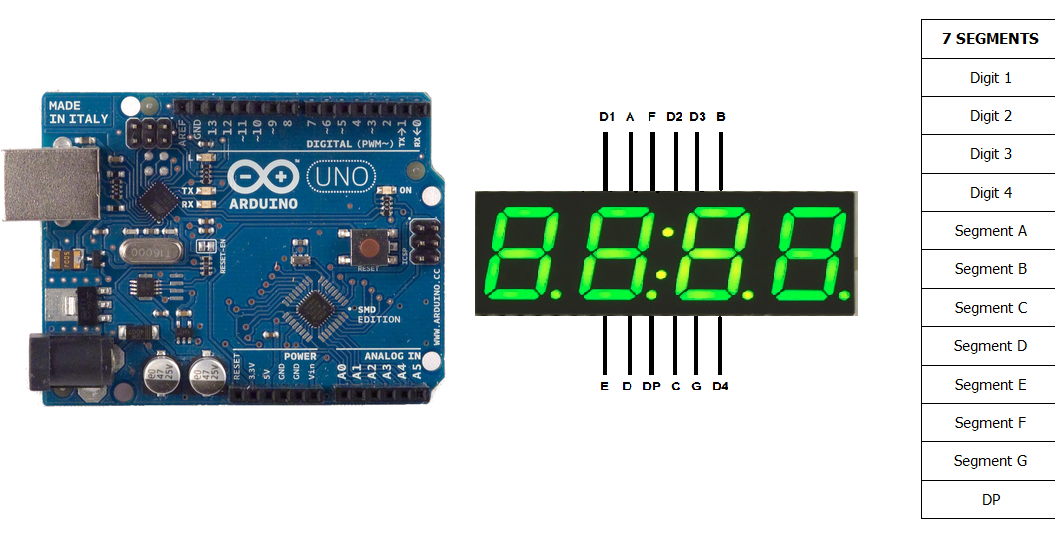

We also provide a library for driving more than one display ( Using Arduino 7 segment LED display library). If the display were common cathode, we would reverse this.Īt the bottom of the article is a photo of the circuit running on my prototype board. Further, we switch OFF the A-G pins to light up a segment. For common cathode this would be GND.Īt this point, make a note of the starting output, as you will need it later when uploading the program.įor this example, the display was common anode, so therefore COMMON is connected to +5V. This shows a common anode unit so the two center common pins are connected to 5V. Left: the graphical view of a 7 segment display showing one common arrangement for internal wiring and pin arrangement.

Each segment of the display has a resistor in series to lower the current through the LED's. Note that although it may seem quicker to connect one resistor to the common pin, this would alter the brightness of the LED's depending how many segments were turned on. An Arduino board with wire and bread boardįar left: the circuit that we are going to build shown as a schematic where A -G and DP connect to sequential output ports on the Arduino board.8 resistors that work with your display (range: 300R-2K2).

If you are uncertain of either the polarity or pinout of your display. See Checking polarity of 7segment display If the display is commonĬathode, then the LOWER voltage side is common, if the display is common anode, then the HIGHER voltage side is common. See ( Arduino multiple digit, 7 segment display tutorial).įirstly, we must know what type of display we have as there are two possible forms, common cathode and common anode. For a tutorial showing how to drive 4 or 8 digit displays In this tutorial I show you how to connect a 7 segment display to an Arduino board.


 0 kommentar(er)
0 kommentar(er)
